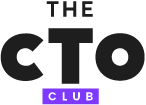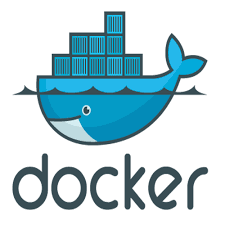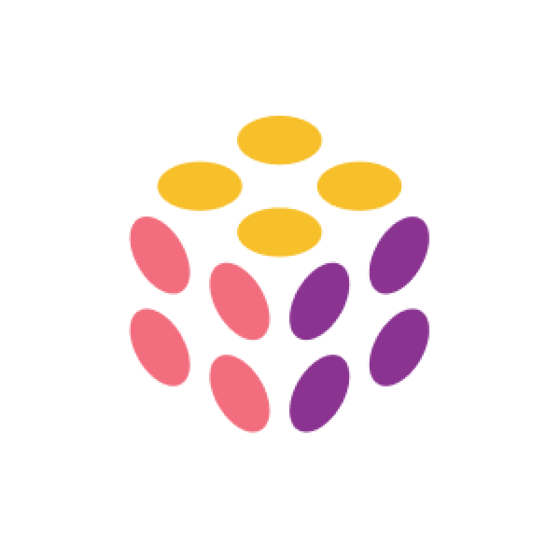Best Front Alternatives Shortlist
Here’s my shortlist of the best Front alternatives:
Our one-on-one guidance will help you find the perfect fit.
In the quest to enhance customer experience, the right customer support tools are invaluable. As an expert with extensive experience exploring myriad tools, I've compiled a comprehensive list of the top 25 Front App alternatives for your support team. These SaaS tools, ideal for teams interacting via Android or iOS mobile apps or SMS, offer robust SLA management and timely notifications. They consolidate customer communications into a single team inbox, heightening efficiency and responsiveness.
What's more, several of these alternatives provide free plans, eliminating the need for credit card details upfront. This allows you to assess their premium features before making a financial commitment. If you're seeking a tool to elevate your customer experience and manage varying requests across platforms like WhatsApp or SMS, these Front App alternatives might just be what you're looking for.
What Is Front?
Front is a front-end development tool that helps teams design and build user interfaces more efficiently. It's commonly used by front-end developers, designers, and product teams who need to collaborate on UI work while keeping code manageable and organized. Its pre-built templates, UI components, and responsive design options help with speeding up development, ensuring consistency, and adapting designs for different screen sizes. Overall, Front helps your team save time and stay focused on the visual and functional parts of your web projects.
Why Trust Our Software Reviews
We’ve been testing and reviewing SaaS development software since 2023. As tech experts ourselves, we know how critical and difficult it is to make the right decision when selecting software. We invest in deep research to help our audience make better software purchasing decisions.
We’ve tested more than 2,000 tools for different SaaS development use cases and written over 1,000 comprehensive software reviews. Learn how we stay transparent & check out our software review methodology.
Best Front Alternatives Summary
This comparison chart summarizes pricing details for my top Front alternative selections to help you find the best one for your budget and business needs
| Tool | Best For | Trial Info | Price | ||
|---|---|---|---|---|---|
| 1 | Best for startups looking for a simple, intuitive customer support tool | 15-day free trial | From $15/user/month | Website | |
| 2 | Best for streamlining support with a multi-channel ticketing system | Free demo available | From $24/user/month (billed annually) | Website | |
| 3 | Best for businesses requiring comprehensive knowledge base features | 15-day free trial + free plan available | From $50/user/month (billed annually) | Website | |
| 4 | Best for real-time customer interaction and live chat capabilities | 14-day free trial | From $29/user/month (billed annually) | Website | |
| 5 | Best for B2B companies in need of advanced collaboration features | 14-day free trial | From $50/user/month | Website | |
| 6 | Best for combining customer support, customer success, and live chat | 14-day free trial | From $15/user/month (billed annually) | Website | |
| 7 | Best for omnichannel support, with over 200+ integrations | 30-day free trial | From $9/user/month (billed annually) | Website | |
| 8 | Best for SMBs seeking robust yet affordable helpdesk solutions | 21-day free trial + free plan available | From $18/user/month | Website | |
| 9 | Best for customer service efficiency with top-tier AI assistance | Free trial available | From $19/agent/month (billed annually) | Website | |
| 10 | Best for e-commerce businesses requiring integrated support and sales | Free trial + free demo available | From $10/month | Website |
-

Docker
Visit WebsiteThis is an aggregated rating for this tool including ratings from Crozdesk users and ratings from other sites.4.6 -

Pulumi
Visit WebsiteThis is an aggregated rating for this tool including ratings from Crozdesk users and ratings from other sites.4.8 -

GitHub Actions
Visit Website
Best Front Alternatives Reviews
Below are my detailed summaries of the best Front alternatives that made it onto my shortlist. My reviews offer a detailed look at the key features, pros & cons, integrations, and ideal use cases of each tool to help you find the best one for you.
Groove
Best for startups looking for a simple, intuitive customer support tool
Groove is a customer support tool designed with simplicity and intuitiveness at its core. It provides essential helpdesk functions in an easy-to-use package, making it an ideal choice for startups seeking to simplify their customer service without sacrificing efficacy.
Pros and cons
Pros:
- Affordability for startups
- Easy setup and minimal learning curve
- User-friendly interface
Cons:
- May not scale well for larger organizations
- Limited customization options
- Lacks some advanced features found in other platforms
HappyFox
Best for streamlining support with a multi-channel ticketing system
HappyFox is a comprehensive helpdesk tool with a focus on multi-channel ticketing, which simplifies the task of managing customer support interactions across different platforms. Its strong suit lies in its ability to streamline support, which is why it is an ideal fit for businesses needing a unified solution for managing customer communications across various channels.
Pros and cons
Pros:
- Automation capabilities to save time and reduce manual effort
- Extensive integration options
- Robust multi-channel ticketing system
Cons:
- Limited customization options in lower-tier plans
- Can be complex for first-time users
- Higher price point compared to some competitors
Best for businesses requiring comprehensive knowledge base features
Help Scout is a customer service tool focused on helping businesses manage their support operations more efficiently. It's particularly potent when it comes to its knowledge base features, making it an excellent choice for businesses that prioritize self-service customer support.
Pros and cons
Pros:
- Efficient customer management system
- Robust integrations with popular apps
- Extensive knowledge base features
Cons:
- Limited customization options
- Lacks advanced automation features
- Higher cost for smaller teams
Intercom
Best for real-time customer interaction and live chat capabilities
Intercom is a customer messaging platform that offers real-time, personalized communication with your customers. With its powerful live chat capabilities, it provides businesses a chance to respond to customer inquiries instantly, making it the optimal choice for firms focused on quick and effective customer interaction.
Pros and cons
Pros:
- Customizable chatbots for better customer interaction
- Strong integrations with business tools
- Real-time live chat capabilities
Cons:
- Limited features in the base plan
- Complex setup for non-technical users
- Can be pricey for small businesses
Best for B2B companies in need of advanced collaboration features
TeamSupport is a B2B customer support software that prioritizes team collaboration and customer communication. It's designed with B2B operations in mind, with features that are directly oriented towards interdepartmental collaboration and effective B2B communication.
Pros and cons
Pros:
- Wide range of integrations
- Strong focus on collaboration
- Designed specifically for B2B operations
Cons:
- Some features, like customer distress index, available only on higher plans
- Might have a steeper learning curve
- Higher pricing compared to some competitors
Kayako
Best for combining customer support, customer success, and live chat
Kayako is a customer service software that merges customer support, customer success, and live chat into a single platform. Its unique proposition of unifying different elements of customer service makes it the optimal choice for organizations that want to streamline their support, success, and communication efforts.
Pros and cons
Pros:
- Affordable pricing structure
- Wide range of integrations
- Comprehensive customer service features
Cons:
- Lack of phone support in lower-tier plans
- Advanced features available only in higher-tier plans
- User interface could be more intuitive
LiveAgent is a complete helpdesk solution offering omnichannel support. It consolidates communication from various channels into a single interface, allowing businesses to provide better and more streamlined customer support. Given its 200+ integrations and omnichannel capabilities, it's highly suitable for businesses aiming to centralize their customer support operations.
Pros and cons
Pros:
- Wide range of features
- Omnichannel capabilities
- Extensive integration options
Cons:
- Some features are only available on higher-priced plans
- Setup may be complex due to extensive features
- Pricing can be high for larger teams
Freshdesk is a comprehensive customer service tool designed to simplify ticket management and provide efficient multi-channel support. With a robust set of features at an affordable price, it's an ideal solution for small to medium-sized businesses (SMBs) keen on maximizing their helpdesk operations without straining their budget.
Pros and cons
Pros:
- Extensive range of integrations
- Powerful automation capabilities
- Affordable for small to medium-sized businesses
Cons:
- Reporting features could be more robust
- Customization can be a bit complex
- Advanced features only available in higher-tier plans
Zendesk is a popular customer service solution that incorporates sophisticated AI to streamline service delivery. This tool excels in organizing, prioritizing, and responding to customer tickets from various channels, all within a single, centralized platform.
Pros and cons
Pros:
- Omnichannel support for unified customer interactions
- Extensive range of integrations
- AI-powered responses to customer queries
Cons:
- Less suited for small businesses due to cost and complexity
- Steeper learning curve for new users
- Higher cost compared to other alternatives
Gorgias is a helpdesk designed specifically for e-commerce businesses, offering tools for integrated customer support and sales. It centralizes customer interactions and data from various sources into one platform, making it an excellent choice for e-commerce businesses that need to streamline their customer support and boost sales operations.
Pros and cons
Pros:
- Consolidates sales and support processes
- Comprehensive integrations with e-commerce platforms
- E-commerce-specific features
Cons:
- Extra costs for additional tickets beyond the plan limit
- Requires a minimum of 2 seats
- Higher starting price compared to some competitors
Other Front Alternatives
Here are some additional Front alternatives that didn’t make it onto my shortlist, but are still worth checking out:
- Zoho Desk
For integrated customer support within the Zoho ecosystem
- Zendesk
For customer service efficiency with top-tier AI assistance
- Hiver
For managing customer support directly from Gmail
- Crisp
Good for companies needing live chat with marketing automation capabilities
- Uservoice
Good for product teams wanting customer input on feature development
- Aircall
Good for call center teams looking for easy setup and management
- Deskpro
Good for companies needing multichannel support in multiple languages
- Kustomer
Good for businesses aiming for omnichannel support and complete customer journey visibility
- UserEcho
Good for businesses needing a community forum for customer feedback
- Tawk.to
Good for on-site live chat and visitor monitoring
- Gladly
Good for businesses requiring a people-centered approach to customer service
- Dixa
Good for companies in search of a customer friendship platform for personalizing support
- UJET
Good for firms seeking a modern, smartphone-era customer support solution
- SupportBee
Good for small businesses needing an intuitive, shared inbox for customer emails
- Grasp
Good for teams looking for a feedback collection tool with analytical features
- Jitbit
Good for teams seeking an intuitive helpdesk tool with a robust self-service portal
Other Software Reviews
Front Alternatives Selection Criteria
As an enthusiast who has extensively tried and researched software tools, I recognize the importance of criteria selection when it comes to alternative front-end development software. I've evaluated dozens of such tools, and here, I am particularly focused on those that streamline the development process and optimize the overall user experience.
Core Functionality
Specifically, a top-tier front-end development tool should provide:
- Interactive Prototyping: The tool should allow for the creation of interactive mockups of the website or application design.
- Code Generation: The ability to convert a design into usable HTML/CSS/JavaScript code is invaluable.
- Version Control: It should support version control, allowing developers to track and control changes to the project.
- Responsive Design Support: It should assist in designing applications that are functional and visually consistent across multiple device types and screen sizes.
Key Features
There are many features these tools could offer, but I discerned those that specifically bring value to front-end development:
- Component Library: A library of reusable components speeds up the development process and ensures consistency.
- Integration Capabilities: The tool should easily integrate with other software used in the development cycle, such as text editors and project management tools.
- Real-time Preview: This feature allows developers to see the effects of their coding changes instantly.
- Cross-Browser Testing: The tool should enable testing of the application's performance and look across multiple browsers.
Usability
When evaluating the usability of front-end development software, several factors come into play:
- Streamlined Interface: The interface should effectively organize tools and features, reducing the time developers need to find and use them.
- Guided Onboarding: As these tools can be complex, guided onboarding that provides a walk-through of major features can be incredibly useful.
- Customer Support: Prompt and competent customer support can greatly assist in troubleshooting and overcoming challenges.
- Learning Resources: An available repository of tutorials, documentation, and community forums can make the learning curve less steep.
- Flexibility of the Environment: The software should allow developers to easily arrange their workspace to fit personal preferences, thus enhancing productivity.
Considering these criteria when selecting a front-end development tool will help ensure a choice that meets your technical requirements and optimizes your workflow, making the development process a smoother and more enjoyable experience.
Why Look For A Front Alternative?
While Front is a good choice of front-end development tool, there are a number of reasons why some users seek out alternative solutions. You might be looking for a Front alternative because…
- You're limited by the pre-designed templates.
- You need more flexibility with custom components.
- Your team prefers a different design system.
- You want better integration with your dev stack.
- You're working on projects that need faster performance.
- You need more control over mobile responsiveness.
If any of these sound like you, you’ve come to the right place. My list contains several front-end development tool options that are better suited for teams facing these challenges with Front and looking for alternative solutions.
Front Key Features
Here are some of the key features of Front, to help you contrast and compare what alternative solutions offer:
- Pre-built components: You can use ready-made UI elements to speed up development and keep designs consistent.
- Responsive design tools: Your team can build layouts that adjust easily across devices without extra coding.
- Custom theming: You can tweak fonts, colors, and styles to match your brand without needing to rebuild everything.
- Grid system: The built-in grid helps you line up content and keep layouts clean and organized.
- Reusable sections: Your team can create and save sections to reuse across multiple pages, saving time.
- Integration-ready layout: It’s easy to connect Front with tools like analytics or form handlers.
- Interactive elements: You can add animations, buttons, and dropdowns that work without needing extra libraries.
- Cross-browser compatibility: The platform makes sure your designs look the same across all major browsers.
Summary
In summary, selecting the best front-end development tool requires careful consideration of various criteria, including core functionality, key features, and usability. A top-tier tool should provide interactive prototyping, code generation, version control, and responsive design support while also boasting a library of reusable components, integration capabilities, real-time preview, and cross-browser testing.
An effective interface, guided onboarding, competent customer support, comprehensive learning resources, and a flexible environment remain pivotal when considering usability. Understanding the pricing models and being aware of the free and premium options available can further assist you in making an informed decision that suits your budget.
Here are the key takeaways to guide your selection process:
- Define Your Needs: Identify the core functionalities and features that are most crucial to your specific use case. This understanding will guide you toward tools that align best with your project requirements.
- Consider Usability: Even a feature-rich tool may fall short if it doesn't provide a user-friendly experience. Pay attention to the interface, support, and learning resources offered by the tool.
- Understand Pricing: While free tools may offer basic functionality, premium options often provide more advanced features. Balance your budget against your requirements to identify a tool that offers the best value.
By applying these key takeaways, you'll be well-equipped to select a front-end development tool that aligns with your needs, fosters an efficient workflow, and ultimately contributes to the successful execution of your project.
What do you think?
In the constantly evolving field of front-end development, new tools are continuously emerging. While I've aimed to provide a comprehensive guide, there might be other valuable tools out there that I haven't covered. So, if there's a tool you've found particularly useful or one you feel deserves a spotlight, please don't hesitate to share.
Your input could greatly enrich this guide and benefit others in their search for the perfect front-end development tool. Let's continue to learn and grow together in our tech journey.
























